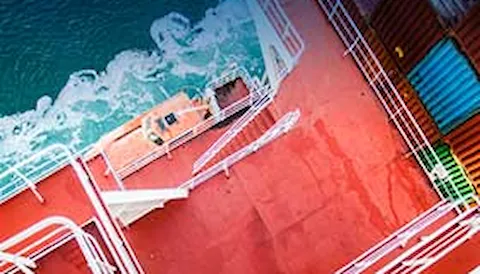RISKEX
DNV has developed the concept RISKEX™, defined as the average risk cost of unwanted events throughout the lifecycle of a project, as a robust and simple-to-calculate risk measure for projects in the oil and gas industry.
RISKEX
The figure below illustrates how different RISKEX™ components affect different parts of the project lifecycle, such as CAPEX, OPEX, production and revenue changes, time of 1st oil and production profile shape elements.

Fig. 1: Generic project life-cycle model with CAPEX, OPEX and RISKEX elements DNV is applying RISKEX™ as an important part of its service offering in the energy sector:
- Calculation of risk exposure
- Ranking of alternative concepts ranking
- Optimization of risk control
- Qualification of new technology
- Inspection planning and maintenance of offshore structures.
Calculation of risk exposure
It is common to generate and maintain risk registers in oil and gas projects. Such risk registers consist of individual risks characterized as events with likelihood and consequence assessments. However, most projects ignore to evaluate the effect of these risks on the overall project desirability (e.g. in terms of NPV), using instead a much rougher approach where only top-level generic risks are accounted for in the evaluation of the total project economics. RISKEX™ provides a mechanism for using a bottom-up approach for assessing the aggregate, time-distributed of individual and specific risks on the overall project economy. DNV is using RISKEX™ as part of its Value Chain Analysis service to quickly and robustly calculate the effect of cost uncertainty on overall project value and also to identify the main risk drivers with respect to the overall project value. By using RISKEX, DNV gives project owners an improved ability to understand project risk exposure and enables the identification and control of the most critical risks /2/.
Ranking of alternative concepts
Different concepts will result in different CAPEX, OPEX and revenue profiles. There might be widely different risk sets associated with the various alternatives such as different availability, different failure frequencies, different development schedules, etc. By applying the RISKEX™ concept, DNV is able to assess the impact of technology and non-technological risks on the cost and revenue streams and also rank the concepts as illustrated in the figure below.

Fig.2: Ranking of alternative concepts in terms of CAPEX, OPEX and RISKEX™ /7/
As seen in the figure, the inclusion of RISKEX™ will lead to a reversal of the concept ranking results.
Optimization of risk control
A common challenge for risk control is to optimize the action set, i.e. identify the set of measures that will reduce risk likelihoods and risk consequences in an optimal manner. DNV has developed a service offering that optimizes risk controls in projects. This service is based on including RISKEX™ in Value Chain Models and optimizing the resulting Net Present Value (or other project decision criteria) by finding the set of actions that influence the RISKEX™ impact in an optimal manner (e.g. within budgetary restrictions). This approach enables a robust and fast optimization. Figure 3 below illustrates the expected NPV value “as is”, risked without risk control and risked with optimal risk control.

Fig. 3: Effect of optimizing risk control on overall project economics
The figure illustrates the huge impact an optimal risk control will have on the overall project economics.
Inspection, maintenance and repair
DNV is using the RISKEX™ concept as part of its inspection, maintenance and repair analyses. Traditionally, cash flow analyses have been based on the balance between revenue, CAPEX and OPEX. Little effort has been used in evaluating lost revenue and expensive intervention costs resulting from unwanted events. By using the RISKEX concept, DNV has been able to include these cost effects in its inspection, maintenance and repair service and also provide a more complete comparison between alternative inspection and maintenance strategies/1/, /4/.
Qualification of new technology
The main challenge in qualification of technology is to reduce the risks associated with its development and operation to an acceptable level and to enable the exploitation of new technology. DNV is using the RISKEX™ concept in its Qualification of Technology service to find the right balance between present investment in technology development and future reward in exploitation of technology opportunities /3/. DNV is also advocating the use of RISKEX™ in their public course offering on technology qualification /5/.
Handbooks and Recommended Procedures
DNV has been involved in several international collaborations, where RISKEX™ has been adapted as part of the terminology definition. One such example is the Consortium for Risk based Inspection and Maintenance Procedures for European Industry /8/. Additionally, DNV has produced handbooks for Reliability, Availability and Maintainability (RAM) assessments where the RISKEX™ concept is applied, see e.g. /6/.
Papers, Presentations and Standard References
/1/ Developing an Inspection, Maintenance and Repair strategy for Ormen Lange, Fredrik Gustavsson, Remi Eriksen & Harald, Anthonsen, SPE paper 96751, SPE Offshore Europe conference, Aberdeen, 2005
/2/ Performance Evaluation of Ormen Lange Subsea Compression Concepts, Remi Eriksen, Fredrik Gustavsson, Edwin Poorte, Bernt Bjerkreim, DOT 2005, Rio de Janeiro
/3/ Reliability Quantification of New Technology, Report for The Research Council of Norway, Stefan Isaksen and Haavard Brandt, DNV Energy report 11YBGP7, 2009
/4/ Optimizing Maintenance and Inspection for Offshore Installations, Haavard Brandt and Christoffer Brown, DOT 2005, November 8-10, 2005, Vitoria, Espirito Santo, Brazil
/5/ Qualification Procedures for New Technology, DNV public course # 2612
/6/ Lifecycle Cost Analysis, J. M. Brandstorp and Remi Eriksen, Guideline RAM10, 1999
/7/ Selecting the Field Development Solution for Ormen Lange, Remi Eriksen and Gunnar Brekke, DNV Gas Seminar, 2005
/8/ RIMAP terminology list, Consortium for Risk based Inspection and Maintenance Procedures for European industry (RIMAP), Report no. 2-21-F-2004-01-1, 2001.
Training
Relevant insight in an active learning environment.
Your added value
Find out more on the digital customer experience.
